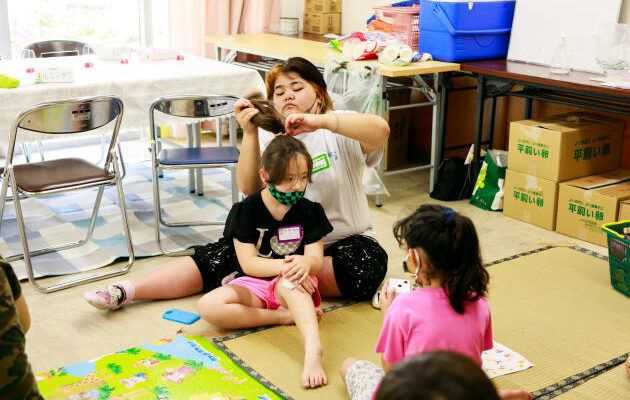Reportage“The other Japan” (4/6). Desired in a country that lacks manpower, the “nikkeijin”, who came in particular from Brazil to work in the factory, are however still often badly perceived by Japanese society.
The windows open on trees barely concealing imposing bars of tired concrete offer a healthy current of air. In July, the community center of the Homi Danchi city, in the Homigaoka district of the city of Toyota, in central Japan, is hosting a meeting of the Torcida association (“support” in Portuguese).
In the small room with dark walls covered with calendars, a blue poster of the Buffaloes, the local baseball team, and a calligraphy of characters meaning “effort”, six Brazilian mothers of Japanese origin, nikkeijin, discuss summer activities in Portuguese with Kyoe Ito, the president of the association who helps them in their daily life and gives Japanese lessons to their children.
Written on colored sticky notes, the ideas are aligned on a board. In the category “Viagen” (“Trip”), there’s the idea of a trip to Okinawa, southern Japan, which gets a lot of laughs and jokes about afternoons at the beach. For estude (“Study”), some suggest putting on a small play. The dynamic Igor Akihito Kondo, the only bilingual present, plays the interpreters. We come to an agreement. There will be a fireworks display on August 14th and a capoeira day on the 28th.
Lunchtime is approaching. We tidy up and we scatter. “We have to put everything back in order. We are not necessarily welcome in the center. For a long time, we were unable to access it ”, explains Mme Ito. Normally open to everyone, until recently the center left its premises only at the disposal of the Japanese, as an example of the difficulties encountered by immigrants in Japan, desired in a country where manpower is lacking but kept at a distance because of a supposed difficulty in adapting to a society which still perceives itself to be ethnically homogeneous.
Tense cohabitation
In 1989, Japan saw a period of strong growth. The aging of the population and the first deficits of workers, a consequence of the decline in the birth rate that began in the 1970s, prompted the government to grant visas to unskilled people. He reserved them for the descendants of poor Japanese peasants, encouraged in 1908 by the government to emigrate to South America, mainly to Brazil and Peru. Many of these nikkeijin seize the opportunity: they were 4,000 in 1990, they are now 220,000 in the Archipelago.
You have 67.79% of this article to read. The rest is for subscribers only.
